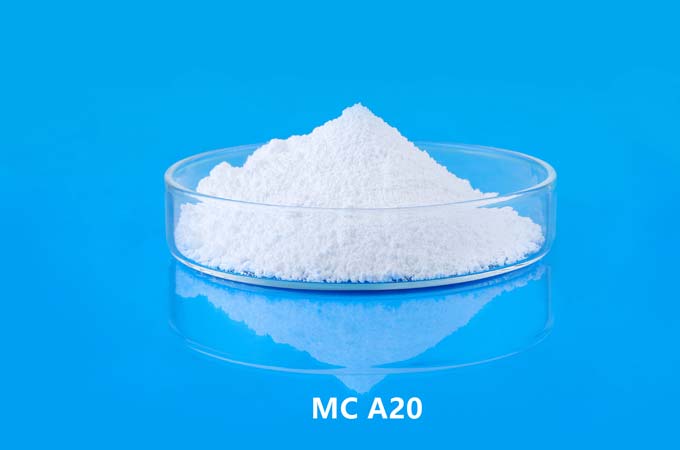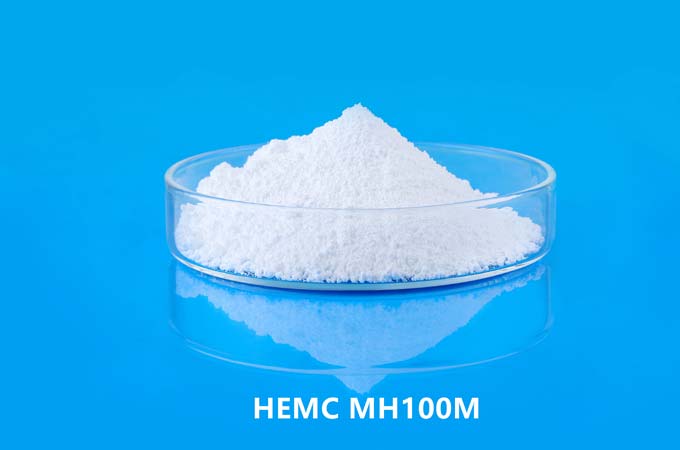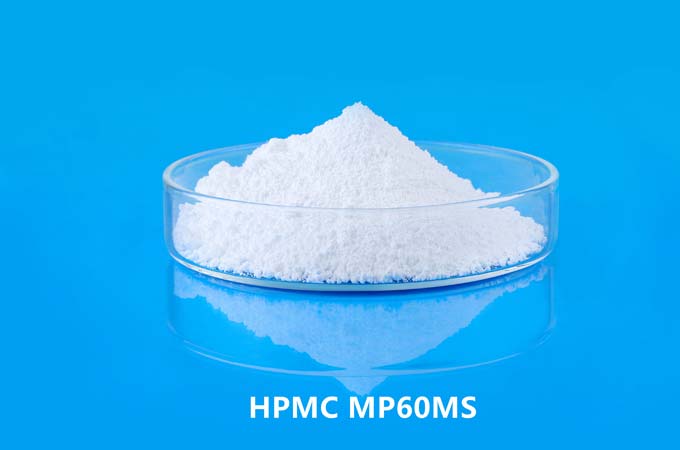Basic Information
Cellulose ether is a polyhydroxy polymer compound that neither dissolves nor melts. After etherification, cellulose ether is soluble in water, dilute alkali solution and organic solvent, and has thermoplasticity.
Nature
The solubility of cellulose after etherification changes significantly. It can be dissolved in water, dilute acid, dilute alkali or organic solvent. The solubility mainly depends on three factors: (1) The characteristics of the groups introduced in the etherification process, the introduced The larger the group, the lower the solubility, and the stronger the polarity of the introduced group, the easier the cellulose ether is to dissolve in water; (2) The degree of substitution and the distribution of etherified groups in the macromolecule. Most cellulose ethers can only be dissolved in water under a certain degree of substitution, and the degree of substitution is between 0 and 3; (3) The degree of polymerization of cellulose ether, the higher the degree of polymerization, the less soluble; The lower the degree of substitution that can be dissolved in water, the wider the range. There are many kinds of cellulose ethers with excellent performance, and they are widely used in construction, cement, petroleum, food, textile, detergent, paint, medicine, papermaking and electronic components and other industries.
Develop
China is the world's largest producer and consumer of cellulose ether, with an average annual growth rate of more than 20%. According to preliminary statistics, there are about 50 cellulose ether production enterprises in China, the designed production capacity of cellulose ether industry has exceeded 400,000 tons, and there are about 20 enterprises with more than 10,000 tons, mainly distributed in Shandong, Hebei, Chongqing and Jiangsu. , Zhejiang, Shanghai and other places.
Need
In 2011, China's CMC production capacity was about 300,000 tons. With the growing demand for high-quality cellulose ethers in industries such as medicine, food, and daily chemicals, the domestic demand for other cellulose ether products other than CMC is increasing. , the production capacity of MC/HPMC is about 120,000 tons, and that of HEC is about 20,000 tons. PAC is still in the promotion and application stage in China. With the development of large offshore oil fields and the development of building materials, food, chemical and other industries, the amount and field of PAC are increasing and expanding year by year, with a production capacity of more than 10,000 tons.
Category
According to the chemical structure classification of substituents, they can be divided into anionic, cationic and nonionic ethers. Depending on the etherification agent used, there are methyl cellulose, hydroxyethyl methyl cellulose, carboxymethyl cellulose, ethyl cellulose, benzyl cellulose, hydroxyethyl cellulose, hydroxypropyl methyl cellulose cellulose, cyanoethyl cellulose, benzyl cyanoethyl cellulose, carboxymethyl hydroxyethyl cellulose and phenyl cellulose, etc. Methyl cellulose and ethyl cellulose are more practical.
Methylcellulose
After the refined cotton is treated with alkali, cellulose ether is produced through a series of reactions with methane chloride as etherification agent. Generally, the degree of substitution is 1.6~2.0, and the solubility is also different with different degrees of substitution. It belongs to non-ionic cellulose ether.
(1) Methylcellulose is soluble in cold water, and it will be difficult to dissolve in hot water. Its aqueous solution is very stable in the range of pH=3~12. It has good compatibility with starch, guar gum, etc. and many surfactants. When the temperature reaches the gelation temperature, gelation occurs.
(2) The water retention of methyl cellulose depends on its addition amount, viscosity, particle fineness and dissolution rate. Generally, if the addition amount is large, the fineness is small, and the viscosity is large, the water retention rate is high. Among them, the amount of addition has the greatest impact on the water retention rate, and the level of viscosity is not directly proportional to the level of water retention rate. The dissolution rate mainly depends on the degree of surface modification of cellulose particles and particle fineness. Among the above cellulose ethers, methyl cellulose and hydroxypropyl methyl cellulose have higher water retention rates.
(3) Changes in temperature will seriously affect the water retention rate of methyl cellulose. Generally, the higher the temperature, the worse the water retention. If the mortar temperature exceeds 40°C, the water retention of methyl cellulose will be significantly reduced, seriously affecting the construction of the mortar.
(4) Methyl cellulose has a significant effect on the construction and cohesion of mortar. The "adhesiveness" here refers to the bonding force felt between the worker's applicator tool and the wall substrate, that is, the shear resistance of the mortar. The adhesiveness is high, the shear resistance of the mortar is large, and the strength required by the workers in the process of use is also large, and the construction performance of the mortar is poor. The cohesion of methyl cellulose is at a medium level in cellulose ether products.
Hydroxypropylmethylcellulose
Hydroxypropyl methylcellulose is a cellulose variety whose output and consumption are increasing rapidly. It is a non-ionic cellulose mixed ether made from refined cotton after alkalization, using propylene oxide and methyl chloride as etherification agent, through a series of reactions. The degree of substitution is generally 1.2~2.0. Its properties vary depending on the ratio of methoxyl content to hydroxypropyl content.
(1) Hydroxypropyl methylcellulose is easily soluble in cold water, and it will encounter difficulties in dissolving in hot water. But its gelation temperature in hot water is significantly higher than that of methyl cellulose. The solubility in cold water is also greatly improved compared with methyl cellulose.
(2) The viscosity of hydroxypropyl methylcellulose is related to its molecular weight, and the larger the molecular weight, the higher the viscosity. Temperature also affects its viscosity, as temperature increases, viscosity decreases. However, the influence of its high viscosity and temperature is lower than that of methyl cellulose. Its solution is stable when stored at room temperature.
(3) The water retention of hydroxypropyl methylcellulose depends on its addition amount, viscosity, etc., and its water retention rate under the same addition amount is higher than that of methyl cellulose.
(4) Hydroxypropyl methylcellulose is stable to acid and alkali, and its aqueous solution is very stable in the range of pH=2~12. Caustic soda and lime water have little effect on its performance, but alkali can speed up its dissolution and slightly increase its viscosity. Hydroxypropyl methylcellulose is stable to common salts, but when the concentration of salt solution is high, the viscosity of hydroxypropyl methylcellulose solution tends to increase.
(5) Hydroxypropyl methylcellulose can be mixed with water-soluble polymer compounds to form a uniform and higher viscosity solution. Such as polyvinyl alcohol, starch ether, vegetable gum, etc.
(6) Hydroxypropyl methylcellulose has better enzyme resistance than methylcellulose, and the possibility of enzymatic degradation of its solution is lower than that of methylcellulose.
(7) The adhesion of hydroxypropyl methylcellulose to mortar construction is higher than that of methylcellulose.
Hydroxyethyl Cellulose
It is made from refined cotton treated with alkali, and reacted with ethylene oxide as etherification agent in the presence of isopropanol. Its degree of substitution is generally 1.5~2.0. It has strong hydrophilicity and is easy to absorb moisture.
(1) Hydroxyethyl cellulose is soluble in cold water, but it is difficult to dissolve in hot water. Its solution is stable at high temperature without gelling. It can be used for a long time under high temperature in mortar, but its water retention is lower than that of methyl cellulose.
(2) Hydroxyethyl cellulose is stable to general acid and alkali. Alkali can accelerate its dissolution and slightly increase its viscosity. Its dispersibility in water is slightly worse than that of methyl cellulose and hydroxypropyl methyl cellulose. .
(3) Hydroxyethyl cellulose has good anti-sag performance for mortar, but it has a longer retarding time for cement.
(4) The performance of hydroxyethyl cellulose produced by some domestic enterprises is significantly lower than that of methyl cellulose due to its high water content and high ash content.
(5) The mildew of the aqueous solution of hydroxyethyl cellulose is relatively serious. At a temperature of about 40°C, mildew may occur within 3 to 5 days, which will affect its performance.
Basic Performance
Admixtures play a key role in improving the performance of building dry-mixed mortar, and account for more than 40% of the material cost in dry-mixed mortar. A considerable part of the admixture in the domestic market is supplied by foreign manufacturers, and the reference dosage of the product is also provided by the supplier. As a result, the cost of dry-mixed mortar products remains high, and it is difficult to popularize common masonry and plastering mortars with a large amount and a wide range. High-end market products are controlled by foreign companies, and dry-mixed mortar manufacturers have low profits and poor price affordability; the application of admixtures lacks systematic and targeted research, and blindly follows foreign formulas.
Water retaining agent is a key admixture to improve the water retention performance of dry-mixed mortar, and it is also one of the key admixtures to determine the cost of dry-mixed mortar materials. The main function of cellulose ether is water retention.
Cellulose ether is a general term for a series of products produced by the reaction of alkali cellulose and etherifying agent under certain conditions. Alkali cellulose is replaced by different etherifying agents to obtain different cellulose ethers. According to the ionization properties of substituents, cellulose ethers can be divided into two categories: ionic (such as carboxymethyl cellulose) and nonionic (such as methyl cellulose). According to the type of substituent, cellulose ether can be divided into monoether (such as methyl cellulose) and mixed ether (such as hydroxypropyl methyl cellulose). According to different solubility, it can be divided into water solubility (such as hydroxyethyl cellulose) and organic solvent solubility (such as ethyl cellulose). Dry-mixed mortar is mainly water-soluble cellulose, and water-soluble cellulose is divided into instant type and surface-treated delayed-dissolution type.
 English
English 日本語
日本語 français
français Deutsch
Deutsch Español
Español italiano
italiano русский
русский português
português العربية
العربية Türkçe
Türkçe Nederland
Nederland



